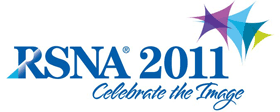
Abstract Archives of the RSNA, 2011
LL-CHS-SU5A
Radiofrequency Ablation of Primary and Secondary Lung Malignancies Using 17-Gauge Needles
Scientific Informal (Poster) Presentations
Presented on November 27, 2011
Presented as part of LL-CHS-SU: Chest
Jean-Pierre Jacques Pelage MD, PhD, Presenter: Research grant, BioSphere Medical, Inc
Consultant, BioSphere Medical, Inc
Research grant, Biocompatibles International plc
Research grant, Merit Medical Systems, Inc
Consultant, Merit Medical Systems, Inc
Research grant, Cook Group Incorporated
Consultant, Cook Group Incorporated
Research grant, Keocyt
Medical Board, Keocyt
Research grant, Terumo Corporation
Consultant, Terumo Corporation
Stephen Binsse, Abstract Co-Author: Nothing to Disclose
Alexis Lacout MD, Abstract Co-Author: Nothing to Disclose
Olivier Limot MD, Abstract Co-Author: Nothing to Disclose
Penelop Labauge, Abstract Co-Author: Nothing to Disclose
Emmanuel Mitry, Abstract Co-Author: Board Member, Keocyt
To evaluate safety and efficacy of radiofrequency ablation using 17 gauge needles in the management of primary and secondary lung malignancies.
40 consecutive patients (mean age 73.5 years) with single or multiple pulmonary nodules underwent radiofrequency ablation under general anesthesia. Procedural complications were carefully evaluated clinically and with computed tomography (CT). Follow-up imaging consisted in CT performed at 1, 3, and every 3 months. Additional findings with special emphasis on new nodules or distant organ involvement were recorded.
Ablations were performed using Leveen or cooltip electrodes in 16 and 24 patients, respectively. Most patients (37/40, 93%) had lung metastases (colorectal, breast, malignant melanoma, esophagus and kidney) and 3 patients a primary lung carcinoma. Thirteen patients had previous surgical resection. Twenty patients presented a single nodule and 20 patients had 2 or more nodules. The mean longest diameter was 24.4 mm. Radiofrequency ablation was well tolerated by all but one patient. One patient presented a self-limiting hemoptysis during treatment. Postprocedural complications included 1 case of pneumothorax requiring chest tube placement in a patient with diffuse emphysema, 9 cases (21%) of pneumothorax detected at CT not requiring chest tube placement and 17 cases (43%) of small parenchymal haemorrhage. Incomplete ablation requiring a second procedure was necessary in 5 patients (13%). Univariate analysis demonstrated that nodules measuring 27.0 ± 7.5 were associated with more local recurrence than those measuring 21.5 ± 5.1 mm. Overall survival and lung disease-free survival was 100% and 44% at 18.2 months.
Radiofrequency ablation of primary or secondary pulmonary lesions is a safe and technically feasible option for the management of unresectable pulmonary malignancies using 17 gauge needles.
Radiofrequency ablation of primary or secondary pulmonary lesions using 17 gauge needles is associated with a low rate of penumothoarx and other complications.
Pelage, J,
Binsse, S,
Lacout, A,
Limot, O,
Labauge, P,
Mitry, E,
Radiofrequency Ablation of Primary and Secondary Lung Malignancies Using 17-Gauge Needles. Radiological Society of North America 2011 Scientific Assembly and Annual Meeting, November 26 - December 2, 2011 ,Chicago IL.
http://archive.rsna.org/2011/11011346.html

